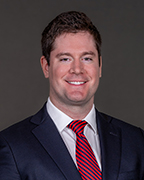 The United States Patent and Trademark Office (“USPTO”) recently announced a significant overhaul of its trademark filing fee structure. These changes, marked by substantial increases across various categories, will undoubtedly affect businesses seeking to protect their trademarks and brands. We highlight the key changes and impacts below.
The United States Patent and Trademark Office (“USPTO”) recently announced a significant overhaul of its trademark filing fee structure. These changes, marked by substantial increases across various categories, will undoubtedly affect businesses seeking to protect their trademarks and brands. We highlight the key changes and impacts below.
Single Base Fee for All Applications
The USPTO is restructuring its trademark application process by charging a single base application fee of $350 per class, which applies to all applications filed under Sections 1 and 44 of the Trademark Act. This change eliminates the previously available TEAS Plus cost-saving option at a cost of $250 per class for trademark applicants.
New Surcharge Fees
The base application fee is only the first step. The USPTO’s Final Rule also introduces three new surcharge fees filed under Sections 1 and 44 of the Trademark Act for incomplete applications, use of the free-form text box, and exceeding the character limit.
The first fee, the insufficient information fee, sets a $100 fee per class, in addition to the base fee, on applications. The fee is imposed if an application fails to include required information like the type of entity, the basis for the application, and trademark details.
The second fee, use of the free-form text box, implements a $200 per class surcharge for trademark applicants who enter their goods and/or services descriptions in the free-form text box as opposed to using identifications from the agency’s Acceptable Identification of Goods and Services Manual (“ID Manual”). The USPTO states this surcharge is aimed at offsetting the increased workload associated with reviewing and potentially amending free-form text entries. However, the ID Manual “is not intended as an exhaustive list of goods and services for which an applicant may seek registration.” As such, applicants are placed in a difficult position of choosing between pre-defined descriptions provided by the USPTO, which may not precisely describe an applicant’s goods or services, or paying the $200 per class surcharge for using the free-form text box. This is particularly problematic for businesses operating in specialized industries or offering unique services, or those with existing agreements that require specific language.
The third fee, a character limit surcharge, imposes a fee of $200 for each additional group of 1,000 characters beyond the first 1,000 characters in the free-form text box, including punctuation and spaces. Of note, applicants who enter identifications directly from the ID Manual will not incur this fee, even if the identification exceeds 1,000 characters.
Post-Registration Maintenance Fees
The USPTO will also increase fees for trademark maintenance filings. Section 9 renewal registration fees will increase from $300 to $325 per class. Section 8 declarations of ongoing use or excusable nonuse will increase from $225 to $325 per class. Section 15 declarations, in which an owner claims incontestable rights in a trademark, will increase from $200 to $250 per class. Section 71 declarations of ongoing use or excusable nonuse, applicable to foreign registrants, will increase from $225 to $325 per class.
Petitions and Letters of Protest Fees
Fees for filing petitions and letters of protest will also increase. The fee for a petition to the director will increase from $250 to $400. The fee for a petition to revive an application will increase from $150 to $250. The fee for filing a letter of protest will increase from $50 to $150.
Intent-to-Use Fees
The USPTO has not changed its amendment to allege use and statement of use fees since 2002. To address the increased volume of “questionable specimens” and the resulting Office Actions, the USPTO will raise both such fees from $100 to $150 per class.
Practical Advice for Applicants
Navigating these new fee structures can be complex. Applicants should carefully review their identifications of goods and services to avoid surcharges for lengthy or custom descriptions. The experienced trademark attorneys of Goodell DeVries’s Intellectual Property Group can assist you in navigating these changes and ensuring your applications are filed efficiently and cost-effectively.

Jim O’Brien
For help in understanding how these changes will affect your business’s intellectual property assets, contact Jim O’Brien at jobrien@gdldlaw.com. Jim O’Brien is an associate at Goodell DeVries, where he represents clients in intellectual property protection and management.
